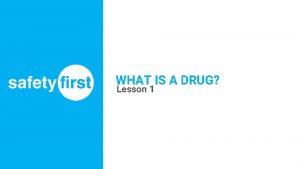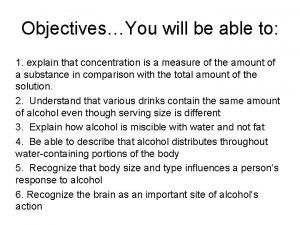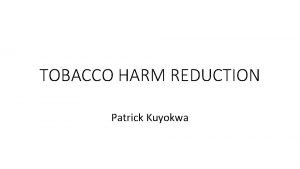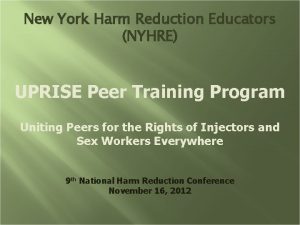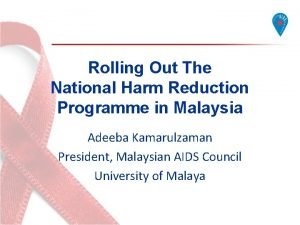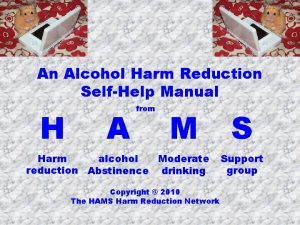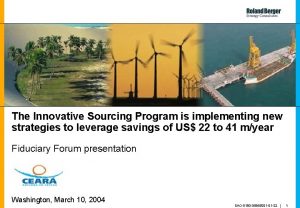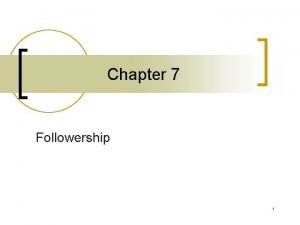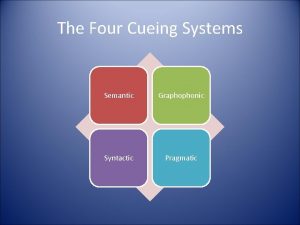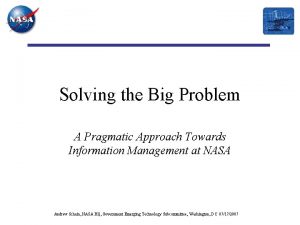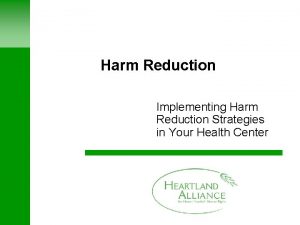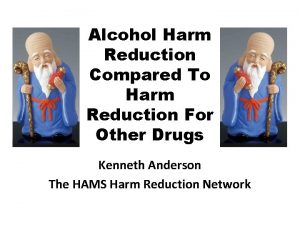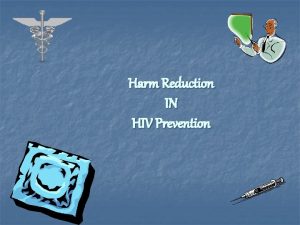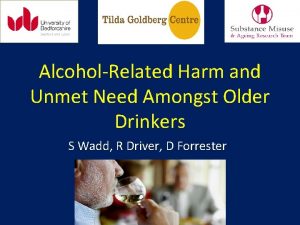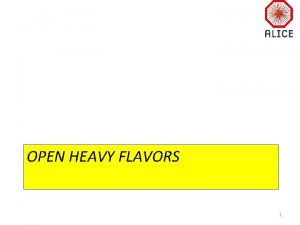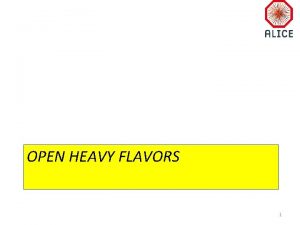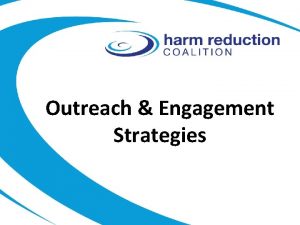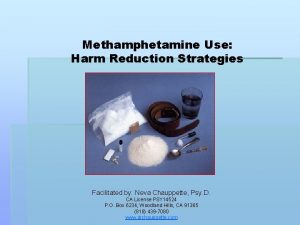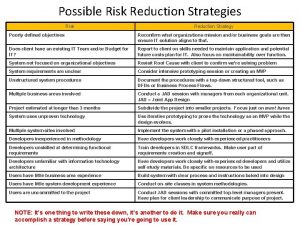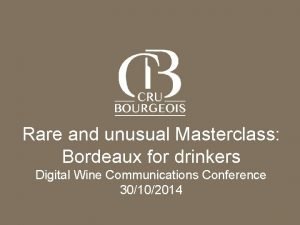Harm Reduction Strategies For Heavy Drinkers Pragmatic harm



















- Slides: 19

Harm Reduction Strategies For Heavy Drinkers Pragmatic harm reduction strategies which can be implemented by heavy drinkers who are either unable or unwilling to abstain from alcohol or drink moderately. © 2008 The HAMS Harm Reduction Network, Inc www. hamsnetwork. org

What is HAMS? Harm reduction, Abstinence, & Moderation Support • Live and online support/informational groups for people who use alcohol, marijuana, or other substances • HAMS fills a gap - harm reduction for “soft” drugs • HAMS is free-of-charge, peer-led, and user-driven • Members choose their own goals - safer drinking, reduced drinking, or abstinence from alcohol • Members make a plan, implement strategies, and receive unconditional peer support in achieving their goal •

Defining Moderate vs. Heavy Drinking n n Women – Moderate: 0 to 2. 5 per day; 0 to 7. 5 per week Women – Heavy: 3 to 17+ per day; 8 to 100+ per week Men – Moderate: 0 to 4 per day; 0 to 12 per week Men – Heavy: 5 to 23+ per day; 13 to 100+ per week (Moderate drinking data, USDA, NIAAA, AHA, Sanchez-Craig (1995)) (one standard drink = 12 oz beer (5% alcohol), 5 oz of wine (12% alcohol), or 1. 5 oz vodka (40% alcohol – 80 proof))

HAMS teaches members that risky drinking levels lie on a continuum

HAMS teaches its members that harm is hierarchical

HAMS teaches members that there are TWO types of drinking-related risks n 1) 2) 3) 4) 5) Quantity related risks sources Daily drinking Heavy drinking sessions High BACs Rapid BAC spikes etc. n 1) 2) 3) 4) Situation related risks sources Drinking & driving Drinking when angry, depressed, etc Worknight drinking etc.

HAMS members implement strategies to reduce quantity related risks or they implement strategies to reduce situation related risks or they implement strategies to reduce both-Each individual creates his/her own plan and no one is forced into a plan which is not of his/her own choosing. NOT EVERY MEMBER USES EVERY STRATEGY!!

Alcohol Harm Reduction Strategies n Situational Safety Strategies 1) Home only drinking 2) Control your glass 3) Plan transport first 4)Always carry condoms 5) Schedule! n Quantity Reduction Strategies 1) 2) 3) 4) 5) 5) Abstinence days Eat first/hydrate Bar only drinking Drink charting Buy to drink Schedule!

Quantity: Have Abstinence Days HARMS PREVENTED: 1) Helps prevents withdrawal, blackouts, and reckless behavior 2) Helps prevent drinking "creep" n COMMENTS: 1) Drinking a fifth of whiskey one night a week is better than drinking a fifth of whiskey every night of the week 2) Daily drinkers may need to taper off before adding abstinence days to prevent dangerous withdrawal symptoms n

Quantity: Eat first and be well hydrated HARMS PREVENTED: 1) Prevents spikes in Blood Alcohol Concentration and helps prevent blackouts and reckless behavior 2) Reduces health consequences and hangover intensity n COMMENTS: 1) Most alcohol is absorbed by the small intestine-eating before drinking greatly slows absorption of alcohol and prevents BAC spikes 2) Being well hydrated by drinking plenty of water before drinking any alcohol helps people to drink more slowly and helps prevent high BACs 3) What's the fun of blacking out? Stay conscious to enjoy the buzz. n

Situational: Drinking Alone/At Home Exclusively HARMS PREVENTED: 1) Death by auto accident, jail for DUI or impaired driving, or prison for vehicular manslaughter 2) Muggings, rape, etc 3) Social embarrassments n METHOD: Abstain from alcohol or limit yourself to a single drink in public; only engage in heavy drinking at home and do not leave home after starting to drink n

Quantity: Drinking In Bars Exclusively n n n HARMS REDUCED: Reduces the amount consumed per drinking session METHOD: Bring only a set amount of cash and no credit or ATM cards to the bar with you COMMENTS: Planning for safe transportation is a must

Quantity: Drink Counting And Charting n n n HARMS PREVENTED: Helps lower all risks associated with high-quantity alcohol consumption by increasing abstinence days and reducing heavy drinking days METHOD: Record the number of standard drinks consumed each day on a calendar COMMENTS: Charting can lead to abstinence via the process of useelimination

Situational: Control Your Glass HARMS PREVENTED: Don't let someone slip you a drugged drink: this can prevent rape, mugging kidnapping, etc. n METHODS: 1) At a bar only accept drinks given directly to you from the bartender--do not let a stranger hand you a drink 2) At a party pour your own drinks and keep your glass in your hand n COMMENTS: Date rape drugs are common -- male or female, gay or straight, it is a bad idea to take drinks from strangers or let strangers pour your drinks n

Quantity: Buy Only What You Plan To Drink HARMS REDUCED: 1) Limits the amount consumed per session to the amount bought 2) Prevents "morning after" drinking which can lead to multi-day binges n METHOD: Keep no alcohol in the house and only buy alcohol when you intend to drink it n COMMENTS: Many people have no problem keeping alcohol in the house-others do better without it n

Situational: Plan Transportation Before Drinking HARMS PREVENTED: 1) Death by auto accident 2) Jail for DUI or impaired driving 3) Prison for vehicular manslaughter n METHOD: Think before you drink-PLAN! n COMMENT: The only safe BAC for driving is ZERO--even if you are below the legal limit you are still legally impaired n

Situational: Always Carry Condoms HARMS PREVENTED: STDs and unwanted pregnancies n COMMENTS: 1) Male or female, gay or straight, intoxicated or sober—ALWAYS CARRY CONDOMS! 2) If you decide to have sex with a stranger while intoxicated the odds of using a condom are much greater if you have one with you than if you have to go to the trouble of going out and buying one n

Situational/Quantity: Schedule And Plan Drinking Days And Abstinence Days HARMS PREVENTED: 1) Prevents job loss 2) Prevents lost productivity 3) Prevents withdrawal and blackouts 4)Prevents failed tests 5) Prevents expulsion from school 6) Prevents wetbrain n COMMENTS: Scheduling and planning are the heart of HAMS n

CONCLUSION n n HAMS members report that putting their plans into writing, and putting them before a HAMS support group helps them to successfully implement their plans. What is essential is that the support group be a safe and nonjudgmental environment where members are not criticized for failures but are met "where they are at" and supported for every positive change. © 2008 The HAMS Harm Reduction Network, Inc www. hamsnetwork. org
 Harm reduction strategies
Harm reduction strategies Drinkers liver
Drinkers liver Shratey calculator
Shratey calculator Harm reduction
Harm reduction New york harm reduction educators
New york harm reduction educators Harm reduction programme
Harm reduction programme Harm reduction worksheets
Harm reduction worksheets Hams alcohol
Hams alcohol Pharmacy cost reduction strategies
Pharmacy cost reduction strategies Risk reduction strategies for new entry exploitation
Risk reduction strategies for new entry exploitation Generation of new entry opportunity
Generation of new entry opportunity Cost reduction strategies
Cost reduction strategies Risk reduction strategies for new entry exploitation
Risk reduction strategies for new entry exploitation Pragmatics and discourse
Pragmatics and discourse Uncritical thinking
Uncritical thinking Kant philosophy
Kant philosophy 4 cueing systems
4 cueing systems Pragmatic approach to problem solving
Pragmatic approach to problem solving Pragmatic theory of truth
Pragmatic theory of truth Implicature
Implicature
